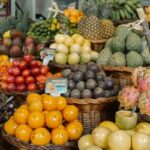We explain what scarcity is, its meaning in economics and biology. Also, the types that exist and what water scarcity is.

What is scarcity?
Scarcity is the “littleness” or “decrease” of something, that is, a condition totally contrary to abundance. Thus, that which is scarce or suffers from scarcity will always be little, poor, lacking or minimal.
The words scarce and scarcity come from the Latin word excarpsustranslatable as “select” or “rare”, and formed in turn by the prefix ex- (“outwards”) and the verb carpere (“select” or “pick”, especially in relation to a fruit). Thus, the term is linked from its very beginnings with the lack of availability of a resource in their respective context.
That is why it is common to talk about shortages today, when for various reasons (economic, climatic, political, etc.) the supplies of goods available to society fail. This can be experienced as a traumatic experienceespecially when it affects fundamental areas of daily life, such as nutrition.
Scarcity in economy
The scarcity principle is often talked about, one of the basic precepts of economic thought. This principle dictates that, Since human needs are infinite, the goods that are capable of satisfying them become scarce goods.. Therefore, it is impossible to satisfy absolutely all human needs and we must choose which ones to prioritize and which ones to simply leave unsatisfied.
To face this dilemma, precisely, economic sciences emerge, in search of ideal methods for the administration of a society's resources, in order to prevent the catastrophic consequences of a sudden and prolonged shortage. The purpose of the economy is to ensure that fundamental goods are those that suffer the least periods of scarcity.. To achieve this, the production cycles must be as continuous as possible.
The notion of scarcity is fundamental in economics, since the availability of goods and resources dictates, among other things, the price of products. So, in principle, The scarcer a good or service is, the more expensive it will be to acquire it.due to the laws of supply and demand. On the other hand, the more abundant the goods are, the cheaper they will be.
Types of scarcity
In economics there is a difference between two fundamental types of scarcity: absolute scarcity and relative scarcity.
- Absolute scarcity refers to an irreplaceable resourcethat is, it has no replacements on the market, and whose existence, therefore, is limited in any sense. Such is the case, for example, of non-renewable natural resources, whose reserves will eventually run out forever.
- Relative scarcity refers to the opportunity cost of a replaceable good or service. within the market, that is, when the availability of a good is judged in contrast with that of another equivalent, or with the quantity of needs to be satisfied. This is what happens when, for example, we compare the type or quality of goods purchased by a rich family (abundant) and a poor family (scarce). Therefore, if we incorporate an even wealthier family, the goods purchased by the first rich family will now be scarce in comparison.
- It is also often spoken of artificial scarcity to refer to scarcity intentionally generated by a market actorlike a store that hoards merchandise to generate an increase in demand and then be able to raise prices. Consumers, faced with the prospect of running out of goods, will then prefer to pay the new price.
Shortage in biology

In the field of biology, the meaning of the term scarcity is slightly different: it has to do with the low presence of a species within its natural ecosystems. Scarce species tend, therefore, to be at risk of extinction, since being more rare than the others, they compete at a disadvantage for resources and have fewer chances of reproducing.
This is what happens to species at risk of extinction, that is, to vulnerable species. They must be protected by international organizations that promote not only their defense from poachers and other forms of exploitation, but also their controlled reproduction and subsequent release, to increase the number of individuals of the species that can be found in the world.
water shortage
One of the great ecological concerns of the 21st century is the growing scarcity of drinking water. This is due not only to the immense margins of water use for agricultural, industrial and urban consumption, but also to the continuous pollution of seas, lakes and even the atmosphere, which introduces harmful elements to the hydrological cycle.
Constant climate change, the result of global warming, also contributes to its scarcity, among whose most dramatic consequences are desertification and the growth of wastelands.
For decades there has been warning about this coming ecological problem, without real progress being made on a global scale. The reuse and resanitization of wastewater, as well as the desalination of sea water, are formulas that are gaining ground very slowly in the face of the gigantic consumption of water by humanity.
Meanwhile, entire populations in the underdeveloped world suffer from a lack of water and the political and economic consequences that this implies, such as the impossibility of agricultural development and population hygiene. At the beginning of the 21st century, around 2.8 billion people on five continents suffer from this problem for at least one month of the year, and more than 1.3 billion people completely lack access to safe water.
Continue with: Economic crisis
References
- “Shortage” on Wikipedia.
- “Water scarcity” on Wikipedia.
- “Scarcity” in the Dictionary of the language of the Royal Spanish Academy.
- “Concept of scarcity” (video) in Educatina.
- “Law of scarcity” in Economipedia.
- “Addressing water scarcity” at FAO.





